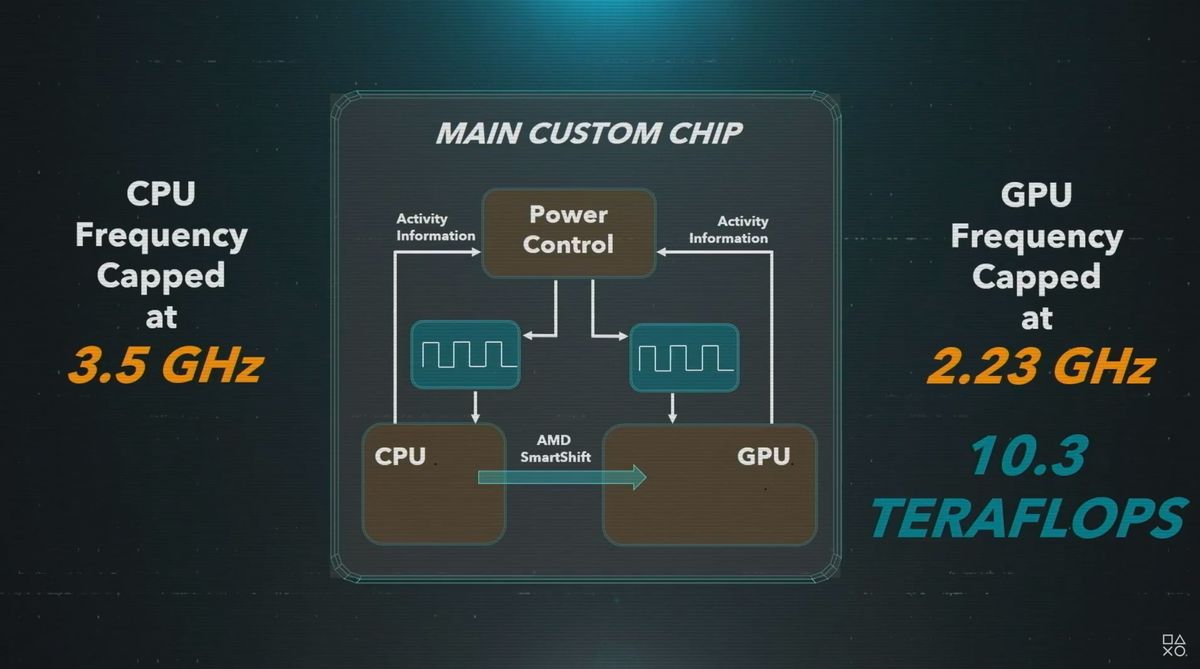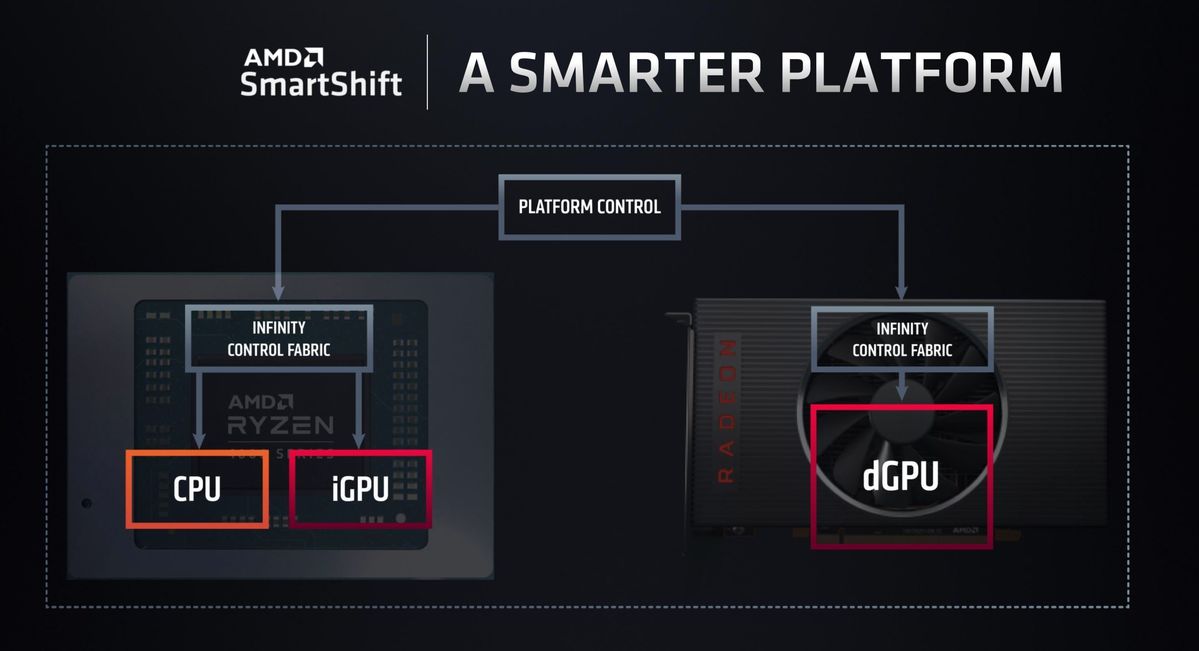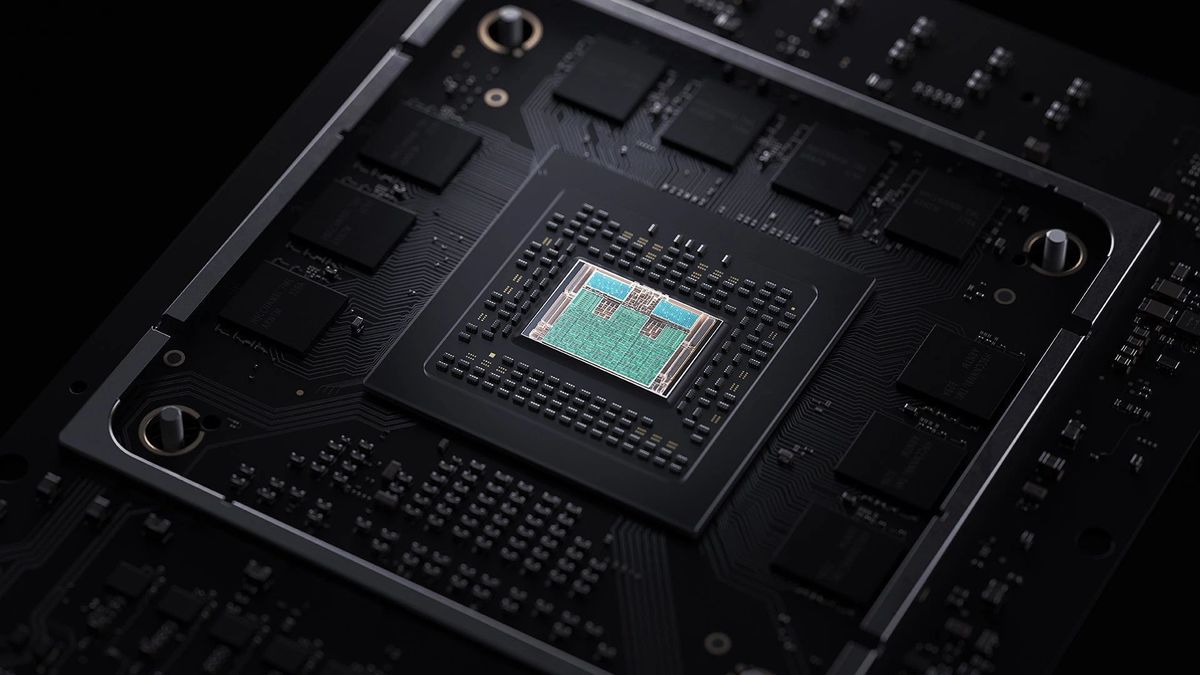Sony pulled back the curtain on key technical details about the forthcoming PlayStation 5 in a streamed presentation on Wednesday. Add to that an early access deep dive by Eurogamer’s Digital Foundry launched simultaneously, and well, it’s all mighty interesting.
Like Microsoft’s Xbox Series X, Sony’s next-gen console is powered by a custom AMD chip with Ryzen CPU cores and next-gen Radeon “RDNA2” graphics cores. The PlayStation 5 also taps into yet another cutting-edge AMD technology being introduced in Ryzen 4000 laptops to provide more oomph intelligently, where it’s needed most. There’s nothing quite like it in desktop PCs or Microsoft’s console.
Graphics chips are limited by thermal and power constraints. Desktop GPUs like AMD’s Radeon RX 5700 series hit a maximum “Game clock” influenced by your specific graphics card’s cooler. The Xbox Series X designed its maximum clock speeds around the console’s cooling capabilities, with both the CPU and GPU running at locked frequencies. But Sony is using adaptive power controls and AMD’s new “SmartShift” technology to have the CPU and GPU loan more power to each other intelligently when it’s needed in games, enabling the PlayStation 5 to hit much higher clock speeds than its rivals.
 Sony
SonyPower management inside the PlayStation 5’s custom AMD chip uses laptop-class SmartShift tech to help allocate clock speeds dynamically between components as needed.
The Xbox Series X’s graphics cores run at a locked 1.825GHz, already faster than the 1.755GHz Game Clock in the $400 Radeon RX 5700 XT, AMD’s current desktop champion. The Sony PlayStation 5 hits a blistering 2.23GHz. PlayStation architect Mark Cerny says his expects the GPU to spend most of its time at that ultra-fast frequency.
Cue Keanu Reeves: Whoa.
Desktop graphics cards dynamically lower clock speeds as the GPU gets hotter—if you stuff your graphics card in an airflow-restricted case or use it during sweltering summer months, for example. Because it has a locked configuration with an enhanced cooling solution, the PlayStation 5 will always perform the same regardless of the ambient temperature, allowing Sony to give the PS5 a set power budget and have clocks revolve around that instead.
“Rather than look at the actual temperature of the silicon die, we look at the activities that the GPU and CPU are performing and set the frequencies on that basis—which makes everything deterministic and repeatable,” Cerny said in his presentation. “While we’re at it, we also use AMD’s SmartShift technology and send any unused power from the CPU to the GPU, so it can squeeze out a few more pixels.”
 AMD
AMDSmartShift for Ryzen 4000 laptops
AMD’s SmartShift technology was introduced as a feature for the company’s upcoming Ryzen 4000 laptops, and it takes advantage of AMD’s full control of both the CPU and GPU silicon. Its Ryzen CPUs and Radeon GPUs can talk to one another over the company’s Infinity Fabric technology. If the CPU isn’t being driven hard, more power can be allocated to the GPU, or vice versa. On the PC side of things, AMD said this can result in a 10-percent boost in performance in games like The Division 2, or a 12-percent bump in Cinebench R20 results.
While Cerny expects the GPU to hover around that ludicrous 2.23GHz clock speed most of the time, he says that even if it needs to be reduced to lend more power to the CPU (or vice-versa), the drop in performance should be negligible.
“When that worst case game arrives, it will run at a lower clock speed,” he said. “But not too much lower. To reduce power by 10 percent it only takes a couple of percent reduction in frequency, so I’d expect any downclocking to be pretty minor.”
PlayStation 5 vs Xbox Series X
Console fanatics aiming to get into heated arguments in online forums will want to know the raw specs. Yes, the tale of the tape gives the Xbox Series X a big advantage in raw firepower, though we’ll have to see how the PlayStation 5’s fascinating approach to power management will affect development.
 Microsoft
MicrosoftA visualization of the custom AMD chip inside Microsoft’s Xbox Series X.
The Xbox Series X packs in an AMD RDNA2-based Radeon GPU with a whopping 52 compute units clocked at 1.825GHz. That’s both bigger and faster than the desktop Radeon RX 5700 XT, offering a total of 12 teraflops of compute power. Digital Foundry’s early prodding puts the Xbox Series X’s GPU roughly on a par with the $700 Nvidia GeForce RTX 2080.
By contrast, the PlayStation 5 revolves around 36 compute units. That’s slightly below the Radeon RX 5700 XT’s count, but with clock speeds hitting that blistering 2.23GHz, it hits a total of 10.28 TFLOPs, just ahead of the RX 5700 XT’s 9.75 TFLOPS.
There’s no doubt the PlayStation 5 will be much better than its predecessor, and rival today’s midrange gaming PCs in the worst case. But there’s also no doubt that the Xbox Series X will be an utter beast that puts most gaming PCs to shame. It remains to be seen just how big the performance difference will be when the two consoles launch this holiday season.
AMD’s RDNA2 architecture will also add dedicated real-time ray tracing hardware to the PlayStation 5. There’s no official word on whether the PS5 will include support for variable rate shading or mesh shaders—smart performance-enhancing tweaks confirmed for the Xbox Series X and RDNA2-based graphics cards, and already present in current Nvidia GPUs—but Cerny talked up “primitive shaders” that sound awfully similar to mesh shaders. Radeon graphics cards based on RDNA2 have been promised to launch later in 2020.
Graphics measurements aside, other PS5 improvements offer a sign of good things to come for we PC-gaming types. Like the Xbox Series X, Sony’s console will be stocked with an 8-core, 16-thread Ryzen processor, and a blistering-fast NVMe SSD. Raising that baseline level of performance should result in big changes from today’s games, which need to target downright ancient consoles built around AMD’s atrocious Jaguar cores and dirt-slow spinning hard drives. Exciting times ahead.
For a deeper look at those details, as well as the 3D audio capabilities included in the PlayStation 5, be sure to watch Cerny’s presentation and read Digital Foundry’s excellent preview. Warning: They’re dense.












